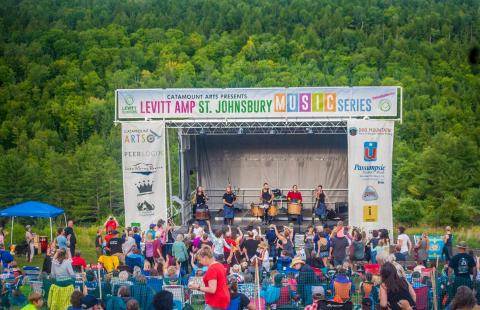What were the specific goals of this creative economy project? Describe the community development challenge or opportunity that your project was designed to address:
There were three primary end goals for this project: 1) a cohesive plan of action will be created to move the creative sector of the NEK forward; 2) the process itself will galvanize NEK community members to understand the power and potential of the creative sector; 3) this NEK project will inform and shape the VCN’s approach to this work for the rest of the state.
If the goals change over time, please describe how:
These goals have remained unchanged throughout the course of the project.
Who was involved in this project and what did they do? (be sure to include the partners from outside of the creative sector and how local voices were included):
There were several different categories and grouping of stakeholders for this project:
Amy Cunningham, deputy director of the Vermont Arts Council and coordinator for the Vermont Creative Network and Jody Fried, Executive Director of Catamount Arts and the chair of the VCN steering Committee helped to guide the project.
The study was completed by a consulting team that includes local leaders working alongside national experts on the creative economy. Principals Michael Kane and Stuart Rosenfeld were among the first in the U.S. to analyze creative enterprises as a distinct industry cluster, and to document the convergence of creative businesses with other regional economic sectors. The team also includes Melissa Levy of Community Roots, a Vermont firm specializing in rural economic and community development.
A NEK Advisory Committee made of 25 artists and community leaders provide input and guidance to the consulting team throughout the process.
Five regional focus groups across the NEK region solicited feedback from approximately 40 individuals working in creative sectors.
The consulting team conducted over 100 in-depth interviews with individuals, including representatives from all creative sectors, statewide and regional leaders, and content experts.
How does this project relate to a larger community development strategy?
Our project has been in coordination with and complementary to larger efforts to better understand and bolster the long term economic prospects of the Northeast Kingdom region. Specifically, our study aligns with the economic priorities laid out by the Northeast Kingdom Collaborative. This group of residents, businesses and organizations recently identified as one of two key priorities advancing economic development through the region’s creative, recreation and food sectors. In addition, most of the NEK Collaborative board members served on our project advisory committee.
What projects or places, if any, inspired your approach to this creative economy project?
We were inspired by many other related initiatives, including the creative economy studies that the principal consultants have conducted nationally-- in Mississippi, Louisiana, the Berkshires, and the Capital district of New York, to name a few. Closer to home, they conducted a regional study of east-central Vermont in 2016, demonstrated that creative industries are a significant, and growing, source of employment and provide a road map that has been useful for that region. We have also been inspired by the work of the Vermont Farm to Plate initiative, in particular their strategic plan: http://www.vtfarmtoplate.com/getting-to-2020.
